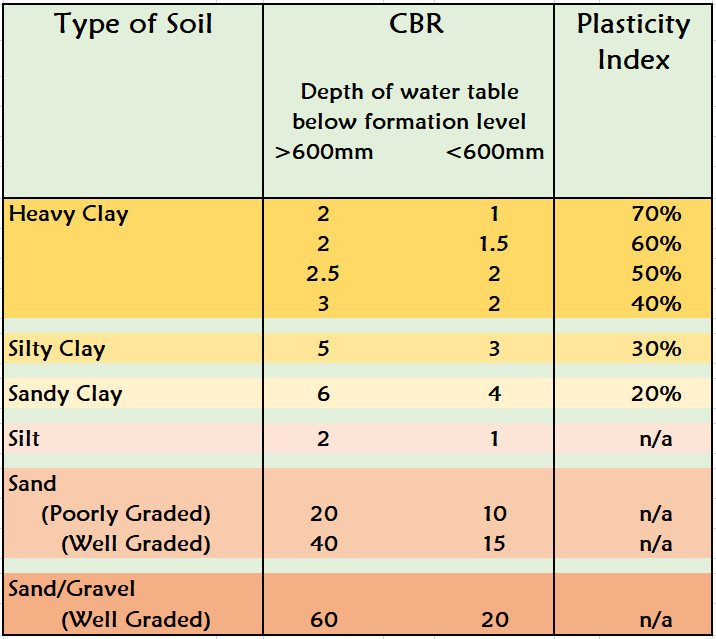Introduction:
Usually, a sub-grade will need some basic preparation to make it fit for construction purposes, and this process is known as 'sub-grade formation' or 'reducing to level'.
The simplest form of sub-grade formation is a 'site-strip'. This process involves the removal of all surface vegetation along with the root zone, approximately 50mm in depth, and any topsoil. It is bad practice to construct a pavement over surface vegetation or topsoil; as organic material, it will decompose, which could lead to the formation of voids in the covering layers, which could, in turn, lead to pavement settlement.
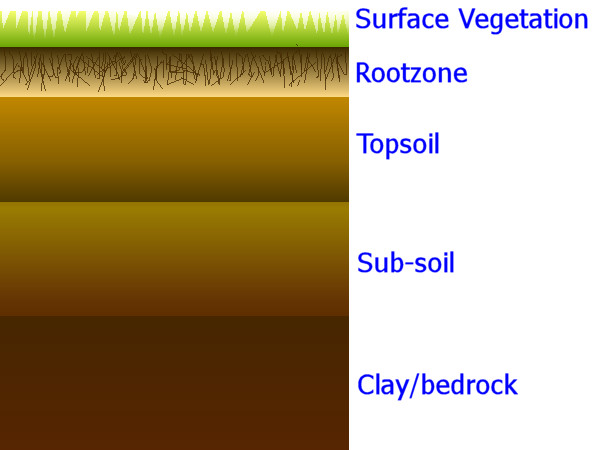
It is only the most straightforward of jobs that will require solely a site strip. Most projects will involve a 'reduction in level', ie, some degree of digging down to a 'formation level'. There are two common reasons for a reduction in level:
- to accommodate the finished levels of paving work
- to remove bad ground, top-soil, soft spots or other deleterious material
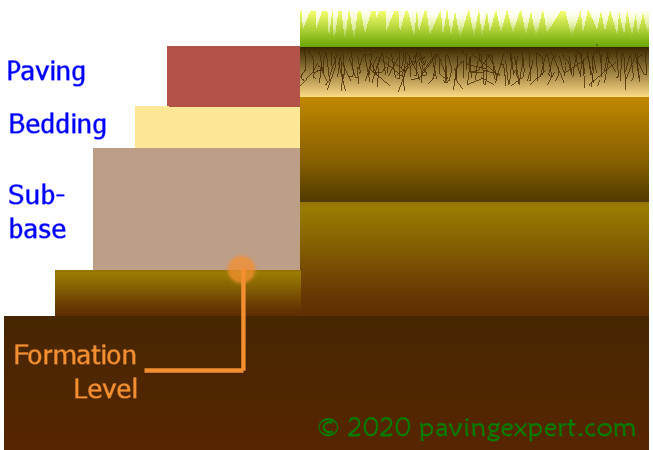
For most paving works, the required construction thickness is known in advance. Once finished paving level is established, the thickness of the paving can be subtracted and this will establish 'formation level', ie, the uppermost surface of the sub-grade. This formation level should be treated as a maximum for the sub-grade.
Bad ground, soft spots, and other construction works may need the sub-grade to be reduced even further to overcome these problems. It is much more cost efficient to remove any potential trouble-spots at this stage than have to take up a section of the final pavement and re-construct the sub-base.
An acceptable formation level will be free of any soft spots, reasonably parallel to the plane of construction. On public highways, it is usual practice to reduce-dig to remove ALL surface vegetation, and top-soil and to establish formation level upon a compacted clay, bedrock or sub-soil.
The picture opposite shows a typical site strip for an estate road. The ground level is established relative to finished floor levels in the properties to be built, while road formation level has been reduced down to a compact clay.
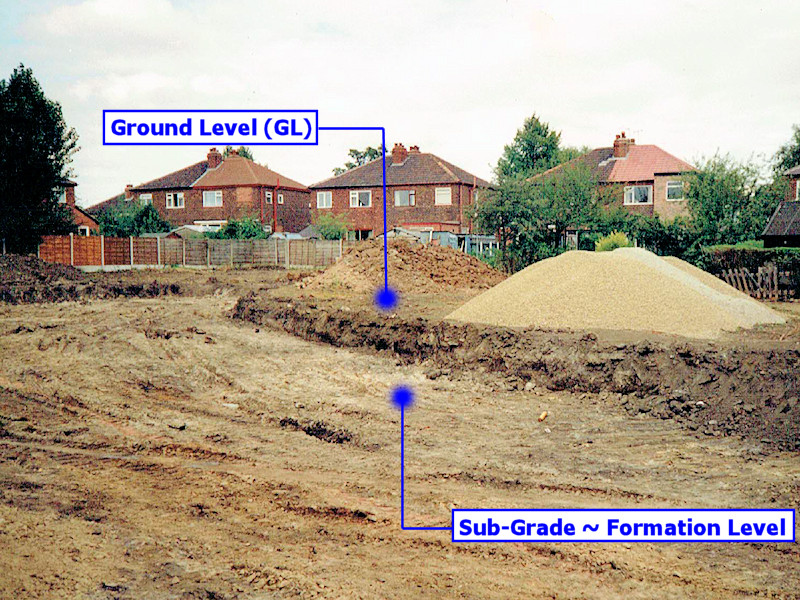
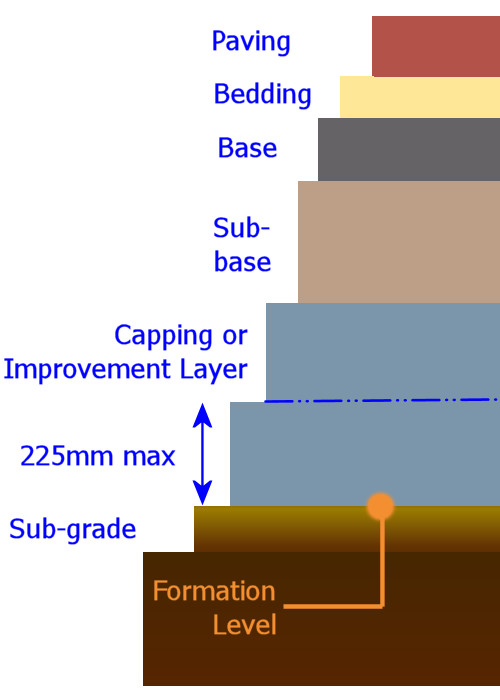
The formation level of the sub-grade is the base of the construction. It will be overlain by the other pavement layers, which may include a capping layer, if the ground is structurally weak, likely to be subjected to exceptional loads or is significantly below an ideal formation level specified by the project engineer. Capping layers are simply layers of a selected fill material, often a crushed rock, laid in layers not exceeding 225mm (normally) and thoroughly compacted before placing further layers, up to sub-base layer.
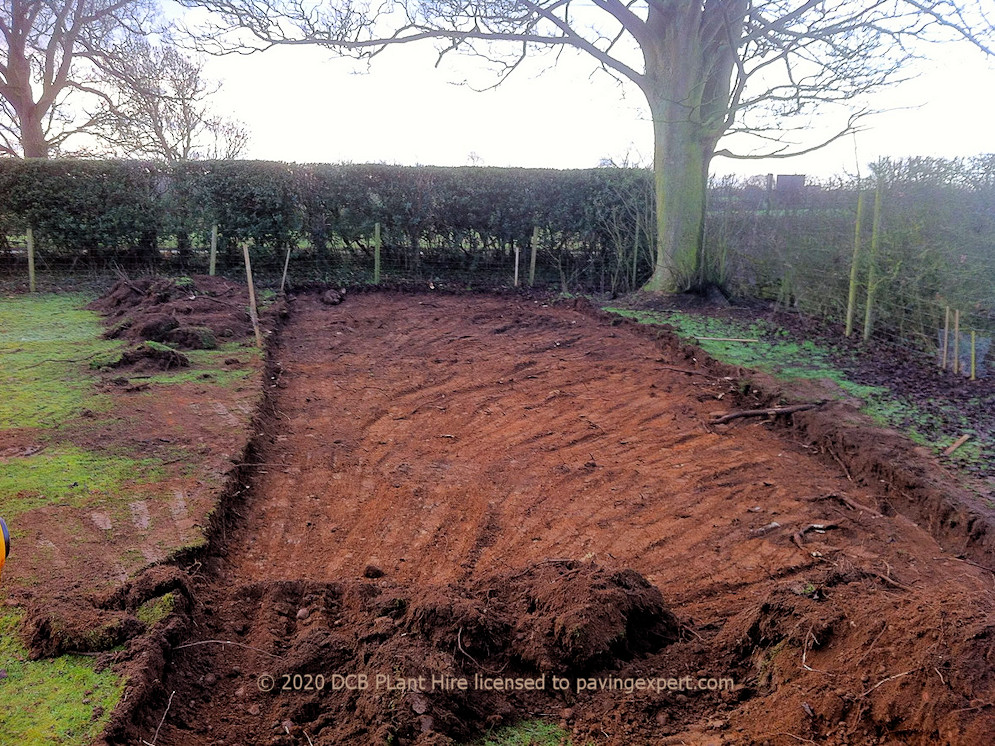
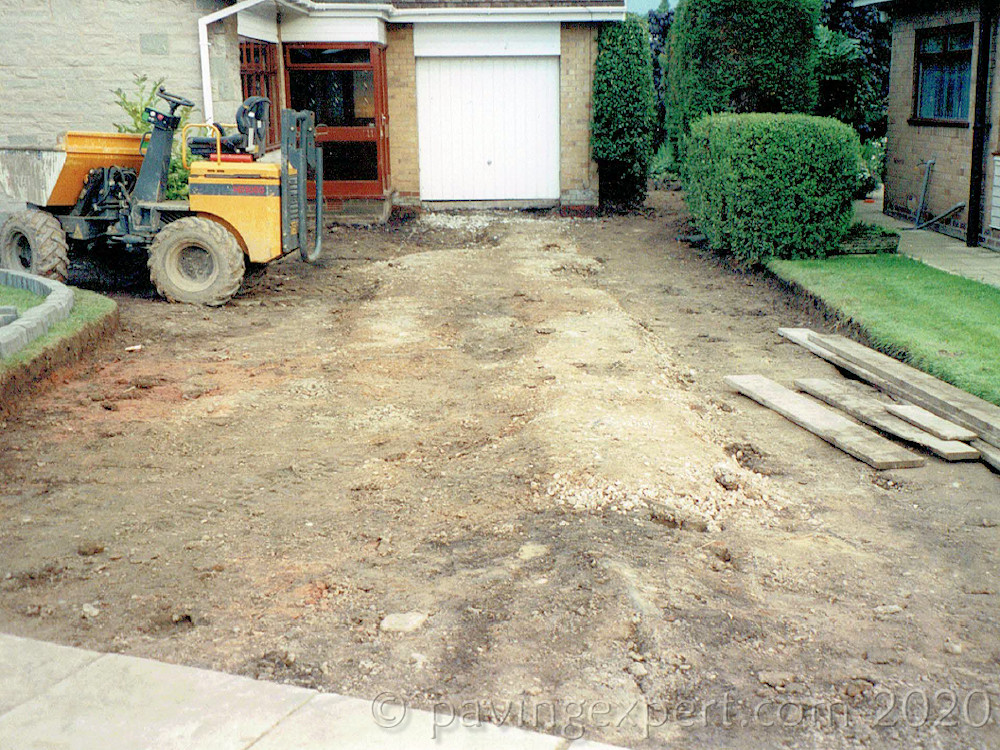
CBR and sub-grade strength
The strength of a sub-grade is measured by a test known as the CBR or "California Bearing Ratio". This test involves the use of a standard plunger being forced onto a sample of the soil/sub-grade being assessed at a steady rate of 1mm per minute. The force required to achieve each 0.25mm of penetration is recorded and the results can be checked against standard tables to give a numerical value which is referred to as the CBR.
The above description is slightly simplistic: the moisture content of the sample can (and does) have a dramatic effect on the actual CBR value, and this has to be taken into account. However, the full test procedure is well beyond the remit of this website and will not be explored further at this stage. Those daft enough to want to know more are referred to BS1377:4 - Soils for civil engineering purposes:Compaction-related tests, which would cure almost anyone of their insomnia!
To keep things simple for contractors and design engineers, the table opposite has been prepared from the empirical data accumulated over decades of measurements. The table gives typical values for the sub-grade strengths (the CBR) normally encountered in the soils of Britain and Ireland. The key to understanding the table is that a high CBR indicates a "stronger" soil/sub-grade.
